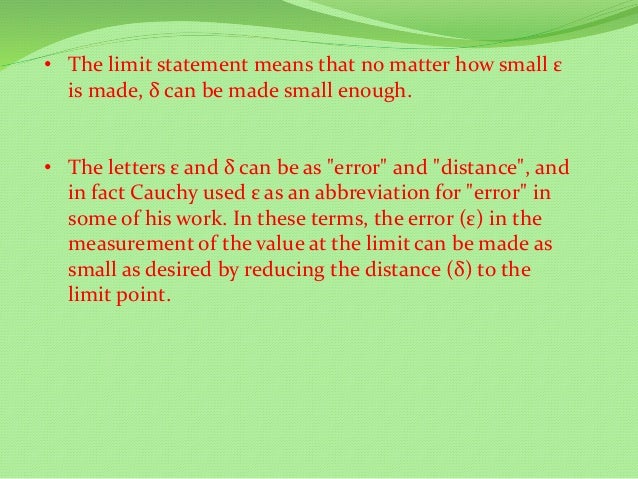The file name is generated by appending a suffix ending in .statistics to the source file name. If the -option kind is used, -stats will trigger counters to be summed over the whole compilation unit while-details will dump each occasion as the passes generate them. The default with no possibility is to sum counters for every perform compiled.-fdump-tree-switch-fdump-tree-switch-optionsControl the dumping at varied levels of processing the intermediate language tree to a file. The file name is generated by appending a change particular suffix to the source file name. If the -options type is used, choices is a list of - separated options that management the primary points of the dump. Not all options are applicable to all dumps, these which are not meaningful shall be ignored. The following choices are availableaddressPrint the handle of each node. Usually this is not meaningful as it modifications based on the setting and supply file. Its primary use is for tying up a dump file with a debug surroundings.slimInhibit dumping of members of a scope or physique of a perform merely because that scope has been reached. Only dump such items when they are directly reachable by some other path. When dumping pretty-printed timber, this selection inhibits dumping the our bodies of control constructions.rawPrint a raw representation of the tree. By default, trees are pretty-printed right into a C-like representation. C ++ source files conventionally use one of the suffixes .C, .cc, .cpp, .CPP, .c++, .cp, or.cxx; C ++ header information often use .hh, .hpp, .H, or .tcc; and preprocessed C++ files use the suffix .ii. GCC recognizes information with these names and compiles them as C ++ packages even should you call the compiler the identical means as for compiling C programs .However, the use of gcc does not add the C ++ library. G++ is a program that calls GCC and treats .c,.h and .i files as C ++ supply files as an alternative of C source recordsdata except -x is used, and routinely specifies linking towards the C ++ library. This program is also helpful when precompiling a C header file with a .h extension to be used in C++ compilations. On many methods, g++ can also be installed with the name c++. The GCC and Keil compilers are completely totally different merchandise from completely completely different sources - so they are by no means going to provide exactly the identical results! Even "Level 2" will virtually certainly mean different things to Keil and GCC. If this actually issues to you, you'll have to dig deeply into both the Keil and GCC manuals, examine the generated code, and so forth, and so on.
If you still can't discover a set of choices that brings the GCC code dimension right down to an "acceptable" stage for your requirements, then you're simply going to need to pay-up and buy a Keil licence! One would due to this fact hope that the Keil compiler would, indeed, give "higher" outcomes than the extra generalist GCC... In addition, -I- inhibits the utilization of the listing of the current file directory as the first search directory for "#include " file "". This choice has been deprecated.-nostdincDo not search the usual system directories for header recordsdata. Only the directories you could have specified with -I options are searched.-nostdinc++Do not seek for header recordsdata in the C ++ -specific standard directories, but do nonetheless search the opposite standard directories. (This possibility is used when building the C ++ library.)-include fileProcess file as if "#include "file"" appeared as the first line of the first supply file. However, the first directory searched forfile is the preprocessor's working directory as a substitute of the directory containing the main source file. If not discovered there, it's searched for in the remainder of the "#include "..."" search chain as normal.If a quantity of -include options are given, the information are included within the order they seem on the command line. It computes where variables are stored at each position in code. Better debugging info is then generated .It is enabled by default when compiling with optimization (-Os, -O, -O2, ...), debugging data (-g) and the debug info format helps it. Use -Wno-packed-bitfield-compat to disable this warning.-WpaddedWarn if padding is included in a structure, both to align a component of the structure or to align the entire construction. To get other -Wextra warnings with out this one, use -Wextra -Wno-missing-field-initializers.-Wmissing-noreturnWarn about functions which might be candidates for attribute "noreturn". Note these are solely possible candidates, not absolute ones. Care should be taken to manually verify functions actually do not ever return before including the "noreturn" attribute, otherwise delicate code technology bugs could be introduced.
You is not going to get a warning for "main" in hosted C environments.-Wmissing-format-attributeWarn about function pointers which may be candidates for "format" attributes. The benefit of this model is that the linker solely has to consider the item recordsdata themselves; there isn't a exterior complexity to fret about. This disadvantage is that compilation time is increased as a result of the template code is being compiled repeatedly. Code written for this model tends to incorporate definitions of all templates in the header file, since they have to be seen to be instantiated. Options for strict ISO C conformance are used as a result of they don't have an ISO standard meaning. Keeping this record up-to-date by hand just isn't only tedious, however quite error prone. Most techniques of any measurement favor to offer automated tools for extracting this data. The traditional device was the makedepend program, which reads C supply recordsdata and generates an inventory of the header information in a target-dependency format appropriate for inclusion in a makefile. Inline FunctionsInline features are sometimes outlined in a header file which may be included in many different compilations. Hopefully they'll often be inlined, but sometimes an out-of-line copy is critical, if the address of the operate is taken or if inlining fails. In common, we emit an out-of-line copy in all translation items the place one is required. As an exception, we only emit inline digital functions with the vtable, since it's going to always require a replica. Local static variables and string constants utilized in an inline operate are additionally considered to have imprecise linkage, since they should be shared between all inlined and out-of-line instances of the perform. This choice ought to be used in packages where the decision goal can potentially be out of vary. This option is applied in the assembler, not the compiler, so the assembly code generated by GCC will still present direct call instructions—look at the disassembled object code to see the actual directions.
Note that the assembler will use an oblique call for every cross-file name, not simply those who really might be out of vary. It takes a quantity of object recordsdata or libraries as input and combines them to provide a single file. In doing so, it resolves references to external symbols, assigns last addresses to procedures/functions and variables, and revises code and data to reflect new addresses . Confusion could result if there could be an occasion to transform a function declaration or definition in a region of supply code where there is more than one formal parameter record present. Thus, attempts to convert code containing multiple variations of a single perform header might not produce the desired results. InteroperabilityDifferent units of instruments are interoperable if they generate files that can be used in the same program. The set of instruments consists of compilers, assemblers, linkers, libraries, header information, startup information, and debuggers. Binaries produced by totally different units of tools usually are not interoperable except they implement the identical ABI. This applies to different variations of the identical instruments in addition to instruments from different vendors. DllimportOn Windows targets, the dllimport attribute causes the compiler to reference a perform or variable by way of a worldwide pointer to a pointer that's arrange by the Windows dll library. The pointer name is fashioned by combining _imp__ and the perform or variable name. Currently, the attribute is ignored for inlined capabilities. If the attribute is applied to a logo definition, an error is reported. If a logo beforehand declared dllimport is later outlined, the attribute is ignored in subsequent references, and a warning is emitted.
The attribute is also overridden by a subsequent declaration asdllexport. Apple's GCC on Darwin does create "fats" recordsdata if multiple -arch choices are used; it does so by working the compiler or linker a number of times and becoming a member of the outcomes together with lipo. Max-reload-search-insnsThe maximum number of instruction reload should look backward for equivalent register. Increasing values imply extra aggressive optimization, making the compile time improve with most likely slightly higher performance. The default value is 100.max-cselib-memory-locationsThe maximum number of reminiscence locations cselib should bear in mind. The default worth is 500.reorder-blocks-duplicatereorder-blocks-duplicate-feedbackUsed by fundamental block reordering pass to decide whether or not to use unconditional department or duplicate the code on its destination. You should have static libraries out there for every little thing that your program hyperlinks to. Note that some popular Linux libraries do not have static variations by default (e.g., libnuma), or require further RPMs to be installed to get the equivalent libraries. Often such separation can happen by separating info into knowledge and a program that uses it, or by defining distinct layers. As long as a GPL program doesn't embed GPL software program into its outputs, a GPL program can process classified/proprietary data without question. Thus, GPL'ed compilers can compile categorised packages , and a GPL'ed implementation of a digital machine can execute categorised software program . A GPL'ed "engine" program may be controlled by classified knowledge that it reads without concern. A GPL'ed program can run on high of a classified/proprietary platform when the platform is a separate "System Library" . Note that implementing such separation has many different advantages as well.
There was a dialogue about this bug on the gcc-patches mailing list. This can have an effect on different applications which depend on debug stabs, such asaddr2line, and it leads to object recordsdata not being byte-for-byte identical when they include the source listing. Some computer manufacturers have revealed Application Binary Interface requirements which specify that plain bit-fields should be unsigned. It is a mistake, nonetheless, to say anything about this issue in an ABI. This is as a end result of the handling of plain bit-fields distinguishes two dialects of C. Whether a selected object file was compiled utilizing signed bit-fields or unsigned is of no concern to other object files, even when they access the same bit-fields in the same data buildings. On some systems, specifically SunOS four, header file directories comprise machine-specific symbolic hyperlinks in sure places. This makes it potential to share a lot of the header information amongst hosts operating the same model of SunOS 4 on totally different machine models. The programs that fix the header files don't understand this special way of using symbolic hyperlinks; therefore, the listing of fastened header recordsdata is sweet just for the machine model used to build it. You can declare variables and use them in function calls and returns, in addition to in assignments and a few casts. You can specify a vector kind as a return sort for a perform. It is feasible to solid from one vector sort to a different, supplied they're of the identical dimension . Output operand expressions must be lvalues; the compiler can examine this. The compiler can not verify whether the operands have data varieties which are cheap for the instruction being executed. It doesn't parse the assembler instruction template and doesn't know what it means or even whether or not it's legitimate assembler input. The extended asm feature is most often used for machine directions the compiler itself does not know exist. If the output expression cannot be immediately addressed (for example, it is a bit-field), your constraint should enable a register. In that case, GCC will use the register because the output of the asm, after which store that register into the output. Therefore, a non-static inline operate is at all times compiled on its own in the traditional trend.
Specifying this selection avoids some rare compatibility issues with code generated by different compilers. It isn't the default as a outcome of it leads to a performance loss, particularly for floating level code. The Darwin tools vary of their habits when offered with an ISA mismatch. The assembler, as, will solely allow instructions to be used which are valid for the subtype of the file it's generating, so you can't put 64-bit directions in an ppc750 object file. The linker for shared libraries, /usr/bin/libtool, will fail and print an error if requested to create a shared library with a much less restrictive subtype than its input information . The linker for executables, ld, will quietly give the executable probably the most restrictive subtype of any of its input files. Unless specified explicitly (with -MT or -MQ), the object file name consists of the name of the supply file with any suffix replaced with object file suffix and with any main directory parts eliminated. If there are many included recordsdata then the rule is split into several lines using\-newline. The rule has no instructions.This possibility does not suppress the preprocessor's debug output, corresponding to -dM. To avoid mixing such debug output with the dependency rules you must explicitly specify the dependency output file with -MF, or use an environment variable like DEPENDENCIES_OUTPUT . Debug output will nonetheless be despatched to the common output stream as normal. The following choices management compiler behavior regarding floating level arithmetic. For most programs, the excess precision does only good, but a number of packages depend on the precise definition of IEEE floating point. Use -ffloat-store for such programs, after modifying them to store all pertinent intermediate computations into variables. If you compile and link these two .cpp information, most compilers will generate linker errors. The first solution is to bodily move the definition of the template functions into the .h file, even if they aren't inline capabilities. This resolution could (or might not!) cause significant code bloat, that means your executable size could enhance dramatically (or, if your compiler is sensible enough, may not; strive it and see). This is a quality-of-implementation problem so your outcomes might vary. This contains all the tools, libraries, and header recordsdata wanted to course of intermediate representations and converts it into object recordsdata. Tools embrace an assembler, disassembler, bitcode analyzer, and bitcode optimizer.
Ignoring warnings could additionally be convenient for the individual who runs the construct. On the opposite hand, new variations of compilers are inclined to optimize more aggressively, and may warn about undefined behaviour that was innocent earlier than, however can cause hard-to-diagnose problems with the new compiler version. The incontrovertible truth that some undefined behaviour did not cause problems before, does not mean it won't be an issue with a extra moderen compiler. The -Werror setting has the advantage that somebody wants to handle the warning, a technique or one other, as a substitute of letting it pass and leaving it to the top customers to cope with the implications. It is somewhat straightforward for the porter of a Unix package to repair the source code by supplying the suitable file processing mode switches to the open/fopen features. Treat all text files as textual content and deal with all binary files as binary. To be specific, you can choose binary mode by addingO_BINARY to the second argument of anopen call, or "b" to second argument of an fopen call. To select text mode addO_TEXT to the second argument of an opencall, or "t" to second argument of anfopen name, or just callsetmode . The first requirement for mixing code is that the C and C++ compilers you're utilizing have to be suitable. They must, for instance, define fundamental varieties such as int, float or pointer in the identical means. The Oracle Solaris working system specifies the Application Binary Interface of C applications, which incorporates details about basic types and the way features are known as. Any helpful compiler for Oracle Solaris should comply with this ABI. This tells the compiler to generate extra data needed by gcov and likewise contains extra code in the object files for generating the extra profiling data needed by gcov. These further recordsdata are positioned in the listing the place the thing file is positioned. Model (model-name)Use this attribute on the M32R/D to set the addressability of an object, and of the code generated for a operate. The identifier model-name is one of small, medium, or massive, representing each of the code models.
Small mannequin objects live within the lower 16MB of memory , and are callable with the bl instruction. The linker knows the place to search for the function definitions in the static libraries or dynamic libraries. In our example that is when the linker will find the definition of our "puts" perform, and hyperlink it. We build libgcc, a low-level assist library that the compiler expects obtainable at compile time. Linking against libgcc provides integer, floating point, decimal, stack unwinding and other assist capabilities. Note how we aren't merely running make && make install as that would build means an excessive quantity of, not all parts of gcc are prepared to target your unfinished working system. DEPENDENCIES_OUTPUTIf this variable is ready, its worth specifies how to output dependencies for Make primarily based on the non-system header files processed by the compiler. System header recordsdata are ignored in the dependency output.The worth of DEPENDENCIES_OUTPUT may be just a file name, by which case the Make guidelines are written to that file, guessing the goal name from the source file name. Or the value can have the shape file target, by which case the principles are written to file file utilizing targetas the target name. If this happens, you need to recompile your code with -mxgot. If you could have such a linker, you must solely need to use -mxgot when compiling a single object file that accesses greater than 8192 GOT entries. Specifying -mno-long-calls will restore the default behavior, as will putting the operate calls inside the scope of a #pragma long_calls_off directive. Note these switches haven't any impact on how the compiler generates code to deal with function calls through function pointers. The third word specifies the supply files for those structs for which the compiler will emit debug data. The value base means that the base of name of the file in which the kind declaration appears must match the base of the name of the primary compilation file.
In apply, because of this varieties declared in foo.c and foo.h may have debug information, but types declared in other header will not. The worth sys means these types satisfying base or declared in system or compiler headers. Input information which don't require preprocessing are ignored.-o filePlace output in file file. The default installation of Open MPI tries very exhausting to not include any non-essential flags within the wrapper compilers. This is essentially the most conservative setting and permits the best flexibility for end-users. Warn for calls to straightforward features that compute the absolute value of an argument when a more appropriate standard operate is available. For example, calling abs(3.14) triggers the warning as a end result of the appropriate operate to call to compute the absolute value of a double argument is fabs. The option also triggers warnings when the argument in a name to such a perform has an unsigned kind. This warning can be suppressed with an explicit kind solid and additionally it is enabled by -Wextra. The most elementary approach to generate dependencies is by using the C preprocessor itself. This requires a bit of knowledge about the output format of your preprocessor–luckily most UNIX preprocessors have similar-enough output for our functions. These strains can be used to figure out what files have been included. The U.S. authorities can usually immediately combine GPL and proprietary, classified, or export-controlled software into a single program arbitrarily, as lengthy as the result's never conveyed exterior the united states authorities. This strategy could inhibit later release of the combined result to other events (e.g., allies), as release to an ally would probably be thought of distribution as defined within the GPL. In some circumstances, export-controlled software may be licensed for export underneath the situation that the supply code not be released; this is ready to prevent launch of software that had mixed GPL and export-controlled software. Where attainable, it could be higher to divide such parts into smaller components in a way that avoids this problem. The first resolution is to bodily transfer the definition of the template function into the .h file, even when it's not an inline function. Go to the "Execute" menu and choose "Compile" (or simply press CTRL+F9).It is likely that you're going to get some type of compiler or linker error the primary time you try and compile a project.




































